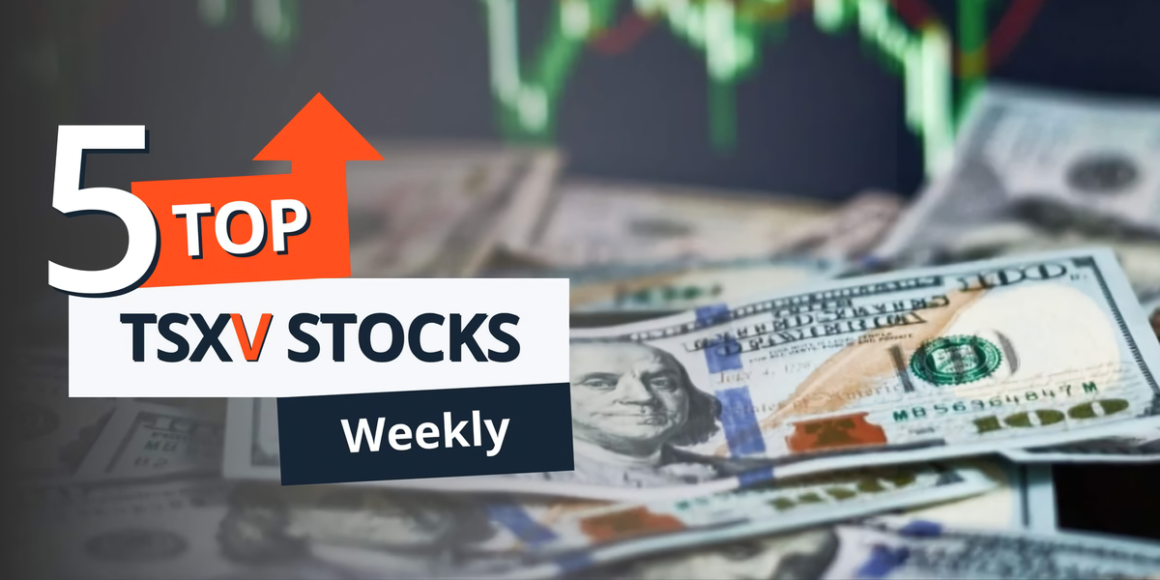Welcome to the Investing News Network’s weekly look at the best-performing Canadian mining stocks on the TSX and TSXV, starting with a round-up of Canadian and US data impacting the resource sector.
How has this week’s news impacted Canadian resource stocks? Here are the top 5 gainers on the TSX and TSX Venture Exchange.
Weekly gain: 87.5 percent; market cap: C$15.06 million; share price: C$0.075
Clean Air Metals is a junior platinum group elements (PGE) exploration company focused on its 100 percent owned Thunder Bay North critical minerals project.
The company provided highlighted intercept of 4.92 grams per metric ton (g/t) platinum, 4.66 g/t palladium, 1.07 percent copper and 0.55 percent niobium over 51.79 meters, including 25.82 g/t platinum, 24.5 g/t palladium, 6.94 percent copper and 3.87 percent niobium over 0.97 meters.
Weekly gain: 66.67 percent; market cap: C$15.42 million; share price: C$0.075
Orosur Mining is an exploration company focused on the development of early to advanced-stage assets in South America.
MMA is currently the operator of Anzá. Exploration has revealed multiple gold deposits at the site, which is located 50 kilometers west of Medellin and sits along Colombia’s primary gold belt.
Orosur also owns several early-stage projects, the El Pantano gold-silver project in Argentina, the Lithium West project in Nigeria and the Ariquemes project in Brazil, which is prospective for tin, niobium and rare earths.
Under the amended terms of the agreement, MMA will receive a 1.5 percent net smelter royalty, plus a fixed royalty of US$75 per ounce of gold or gold equivalent of the first 200,000 ounces produced.
Weekly gain: 54.84 percent; market cap: C$99.51 million; share price: C$0.72
Q2 Metals is a gold and lithium exploration company with operations in the Eeyou Istchee James Bay region of Québec, Canada, as well as in Queensland, Australia.
Its flagship asset is the Mia lithium property in Québec, which consists of 171 mineral claims. Exploration at the site began in 2023, with surface mapping taking place in June and its inaugural drill program commencing in October. In addition to Mia, the company also owns the Stellar Lithium property 6 kilometers north of Mia, which consists of 77 claims covering 3,972 hectares.
The company’s lone Australian asset is the Big Hill gold project, which comprises several historic mines including Big Hill, Queenslander, Monte Cristo and Sultan, and Taylor.
Weekly gain: 55.56 percent; market cap: C$28.62 million; share price: C$0.07
Western Resources is a potash exploration and development company working to advance its flagship Milestone project.
Located 35 kilometers south of Regina, Saskatchewan, Canada, Milestone is situated on 84,557 acres of Crown held mineral leases and 65,305 acres of freehold leases. To date the company has completed 11 exploration wells on the property along with 2D and 3D seismic studies.
Western Resources saw gains this past week but hasn’t released further updates on financing for the Milestone project.
Weekly gain: 50 percent; market cap: C$156.04 million; share price: C$1.20
Magna Mining is a mineral exploration and development company focused on advancing its Crean Hill nickel-copper-PGE project and Shakespeare nickel project in Canada. Both Crean Hill and Shakespeare are brownfield projects located near Sudbury, Ontario, that have seen historic mining operations.
Shakespeare is composed of 29 patented and 787 mining claims covering an area of 18,074 hectares. The site hosts a past-producing mine and has permits in place for a 4,500 metric ton per day mine, mill and tailings storage.
The TSX, or Toronto Stock Exchange, is used by senior companies with larger market caps, while the TSXV, or TSX Venture Exchange, is used by smaller-cap companies. Companies listed on the TSXV can graduate to the senior exchange.
The exchange lists a handful of other fees and expenses companies can expect, including but not limited to security commission and transfer agency fees, investor relations costs and director and officer liability insurance.
These are all just for the initial listing, of course. There are ongoing expenses once companies are trading, such as sustaining fees and additional listing fees, plus the costs associated with filing regular reports.
Investors can trade on the TSXV the way they would trade stocks on any exchange. This means they can use a stock broker or an individual investment account to buy and sell shares of TSXV-listed companies during the exchange’s trading hours.
Article by Dean Belder; FAQs by Lauren Kelly.
Securities Disclosure: I, Dean Belder, hold no direct investment interest in any company mentioned in this article.
Securities Disclosure: I, Lauren Kelly, hold no direct investment interest in any company mentioned in this article.


Leave a Reply